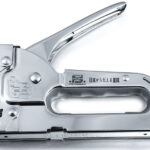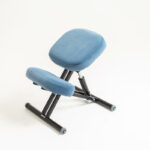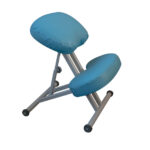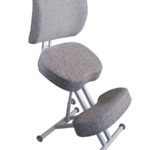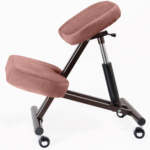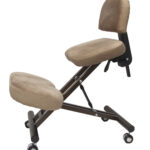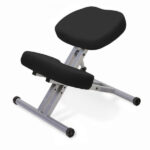How to make a knee chair with your own hands
Having seen a knee chair for the first time, not all of us will understand what it is. An interesting design that doesn't quite look like a standard stool or chair might make you wonder how you can sit on it.
Orthopedic knee chair manufacturers claim that this is the best invention for keeping your back healthy and preventing scoliosis.

Ordinary chairs have a back and we, leaning on it, can keep our posture, but as soon as we break away from it, our back gradually tilts, and we begin to slouch, looking for the most comfortable position. The knee chair solves this problem by relieving the bulk of the load on the spine. The greater the angle of the seat, the smoother your back will be. You simply cannot bend and stoop your back.
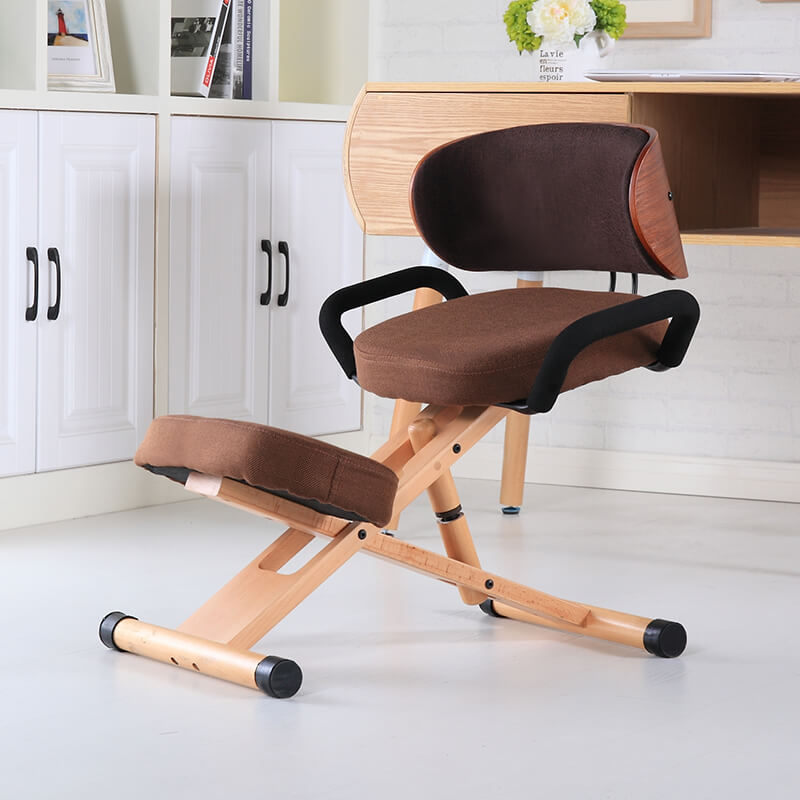
What is a knee chair? This is a structure made of wood or metal, created to relieve the main load from the spine when sitting, due to the support on the knees. Serves to form the correct posture.

History of appearance
In 1970, the Danish scientist Mendel was engaged in the observation and study of the postures of people leading a sedentary lifestyle, office workers, schoolchildren. Considering how they sit, he concluded that the most comfortable position for sitting on a regular chair is to lean the body forward relative to the pelvis. It is this repetitive position of the body that leads to curvature of the spine and other back diseases.

Based on this, he designed a chair with the seat tilted 15 degrees downward. Such a structure helped to maintain correct posture, but it had its drawbacks. A person sitting on such a chair would constantly roll off of it.

A number of researchers from Norway became interested in Mendel's work and in the course of development, they improved the knee chair by inventing a knee support. Thus, they managed to evenly distribute the load on the buttocks and knees, and the spine began to serve as the center of gravity. The body of the seated person reflexively straightened at the slightest tilt forward.

One of the developers of such a chair was the owner of a furniture factory, Peter Opsvik. It was thanks to him that such a chair hit the store shelves.
Therapeutic action
The knee orthopedic chair model allows you to adjust the height of the seat, adjusting to each one. With a properly adjusted chair, the load is distributed approximately 60 to 40. Of these, 40 percent of the load goes to the knees and only 60 to the pelvis.This allows you to significantly relax your back muscles and take a comfortable position without tilting the body forward. Those. you will be comfortable sitting on such a chair with a straight back.

Doctors and orthopedists advise purchasing such a chair for schoolchildren and students who have to spend a lot of time sitting at their lessons.
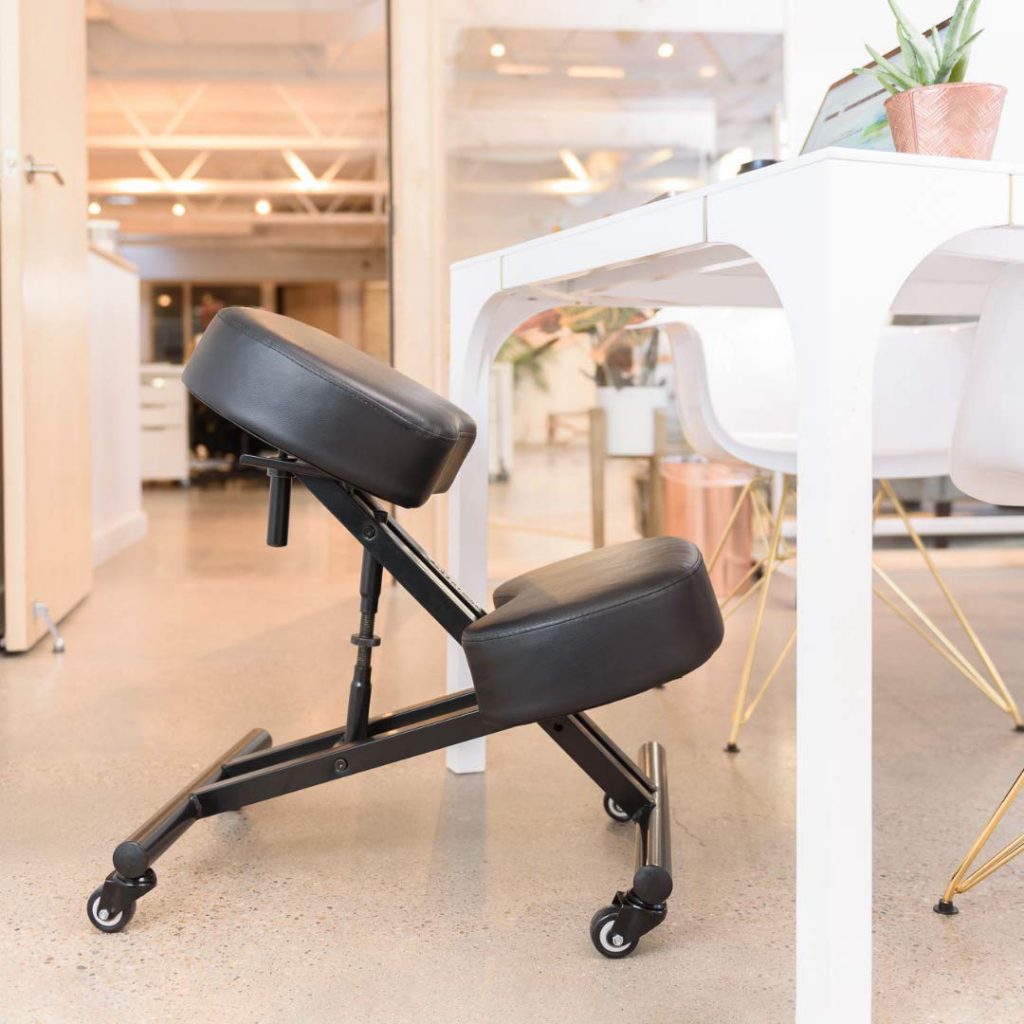
Advantages and disadvantages
Almost no invention is perfect, and even the most perfect design has flaws and shortcomings.
Pros of a knee chair:
- posture improves;
- back muscles are trained;
- the load on the spine decreases;
- prevention of scoliosis;
- improves blood flow in the lower body;
- the chest straightens, breathing improves;

Minuses:
- the appearance of painful sensations in the knee joints;
- a period of getting used to is required;
- feet may go numb;
- slipping off the chair is possible;
- it is necessary to adjust the chair for each person sitting down;
- unsightly appearance;
People who have been using this model of chairs for a long time get so used to it that they no longer want to change to a regular one.

Although there are disadvantages, this does not mean that all of them will be relevant to you. Some people with sore knees do not experience joint discomfort or pain when sitting in an orthopedic chair with this design. It all depends on whether you distribute the load correctly and which chair model you choose.

Manufacturers, in pursuit of originality, come up with their own chips, which do not always have positive functionality.
The most important thing to remember is that when choosing an orthopedic knee chair, take into account your physiological characteristics: weight, height, chronic diseases.

How to make a knee chair with your own hands
Despite the fact that the knee chair has a simple structure, the prices in stores for them are quite high. Due to the fact that in the description of properties there is the word "orthopedic", manufacturers artificially and unreasonably inflate their prices.

You can make such a chair yourself. This does not require any supernatural skills or materials. You can find diagrams and drawings freely available on the World Wide Web. In addition, a knee chair made by you yourself will correspond to your wishes and physique.
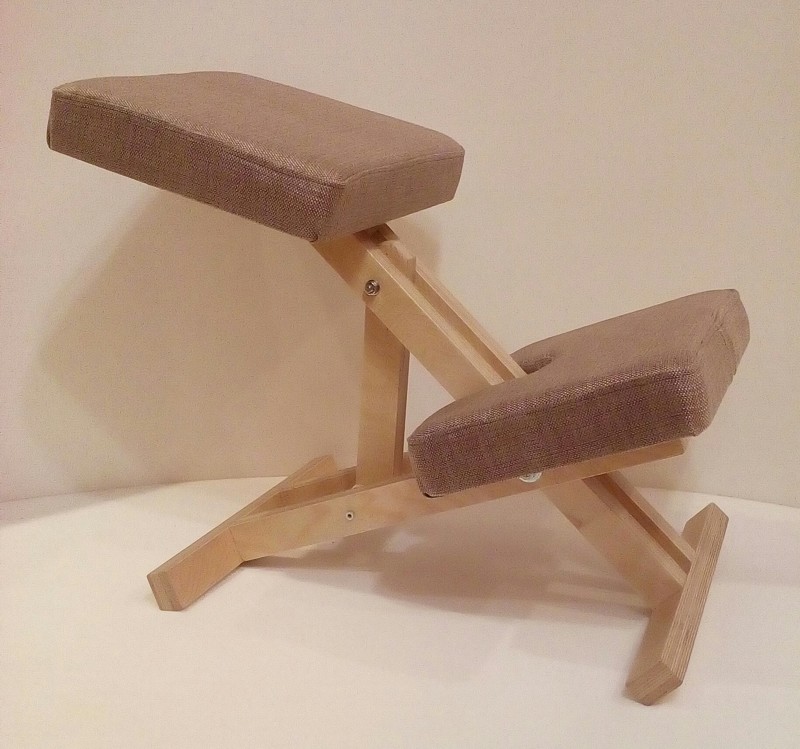
If your knees hurt, you can make the knee support especially soft for more comfort.
Drawing and diagram
In order to choose the right finished circuit or drawing, you should carefully read the instructions that come with them.
First of all, having studied the available schemes, consider whether they meet your requirements. Based on them, you can draw up a drawing that suits you.

The drawing must necessarily contain:
- dimensions of parts;
- places of fasteners;
- part with seat height adjustment.
All details should be drawn either in real dimensions, or use scaling, i.e. resize while maintaining proportions.

Choice of tools
Before you start creating an orthopedic knee chair, prepare a standard set of tools:
- Pencil or marker;
- Roulette or ruler;
- Drill;
- Screwdriver and self-tapping screws;
- Saw or jigsaw;
- Sander or sandpaper;
- Furniture stapler.
The choice of tools directly depends on the materials from which you will make your chair. It can be made not only of wood and plywood, but also of iron. In this case, you will additionally need a grinder or a metal saw and a welding machine.
Selection of material
- Plywood sheet;
- Hardwood bars;
- Upholstery fabric;
- Foam rubber or other filler;
- Fastening parts;
- Glue;
- Varnish;
- Paint and brushes are optional.

Most often, at home, such chairs are still made of wood and plywood. In rare cases, metal is used. Large manufacturers, on the contrary, prefer metal samples.
Chair making process
In order to properly make an orthopedic knee chair with your own hands, you need to perform all your actions in stages.
- All parts are cut from the bars according to the drawing. Vertical bars: two front and one back. Horizontal: cross bars (horizontal legs). Detail with slots for height adjustment.
- All places for self-tapping screws are drilled in advance with a drill.
- We connect individual parts.
- We attach the transverse bars, they will serve as legs.
- Two blanks are cut from plywood under the seat and under the knees.
- We glue foam rubber on them and tighten with a fabric for upholstery.
- We attach the seat at an angle of 15 degrees to the front vertical bars and a support under the knees.
- We cover with varnish.

It is best to use furniture dowels and wood glue when joining parts. Self-tapping screws can be used additionally for reliability.
To prevent the soft parts of the chair from sinking, it is advised to use several types of foam rubber of different hardness, gluing them to each other.
Operating rules
The main goal of orthopedic developments is considered to be the prevention and treatment of diseases of the musculoskeletal system. This chair is no exception.
A positive result after using it gives grounds for orthopedic surgeons to recommend a knee chair to their patients.

Of course, it won't solve your problems, but when used correctly, it will greatly ease your posture problems.
In order for you to be comfortable sitting on such a chair, it is important to correctly adjust its height, namely the distance between the knee support and the seat itself.

Also, do not forget to periodically get up from it and do a short walk, warm-up or exercise to improve blood flow in the lower extremities.
Knee chairs often take some getting used to. Start with 10-15 minutes a day, gradually increasing the time you sit on it. If you feel uncomfortable sitting in this chair and can't get used to it, give up this idea. Listen to your body.

Video: do-it-yourself knee chair for posture

